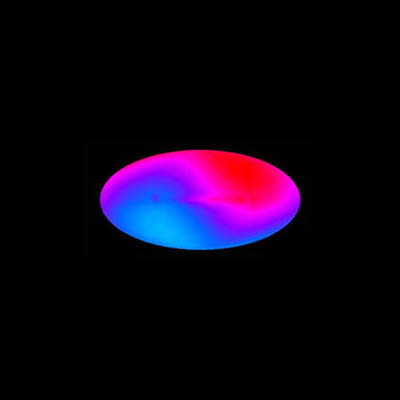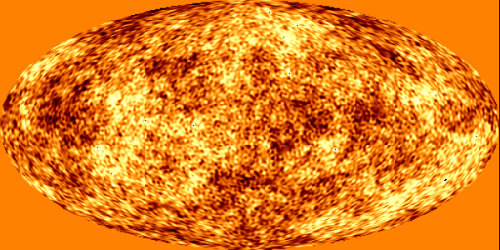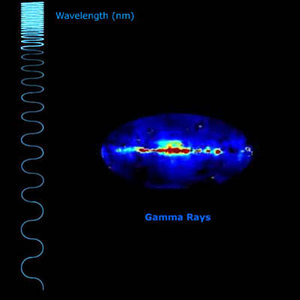Energy=light=radiation=temperature?
Sometimes we use the term 'radiation' when we mean 'light', and vice versa. In fact visible 'light' is a form of radiation, which can be defined as an energy that travels in the form of electromagnetic waves. It can also be described as a flow of particle-like 'wave-packets', called photons, that travel constantly at the speed of light (about 300 000 kilometres per second). Radiation, electromagnetic waves and photons are simply 'light'.
How can we describe light?
Most of us describe light in terms of its brightness and its colour. Physicists, however, need to be more precise and use the analogous terms 'intensity' and 'wavelength'. As far as the first term is concerned, it is a precise way to express how much energy can be extracted from a given bunch of photons; conceptually it is the same as brightness.
The second term, wavelength is more interesting. If you start thinking of light in terms of waves, you can also think of associating it with a time or scale length: think of waves on the beach, where wave crests hit the beach one after the other. The wavelength is the separation between consecutive crests, and the frequency is the number of crests hitting the beach each second. It is exactly the same for light, with the only difference that instead of water we talk of electromagnetic energy.
Visible light

It turns out that the human eye is tuned (by evolution) to detect the light that is emitted by the Sun - what we call 'visible light'.
In fact almost everything we see is light which originally came from the Sun and has reflected from some other object around us.
The Sun emits mostly yellow light, but we can see a small range of colours around that, starting from the blue, through yellow, to red. Each colour has a wavelength associated with it, for example blue light corresponds to about one third of one millionth of a metre, and red light to about twice that.
The point about thinking of wavelengths rather than colours is that you can now extend the idea to any wavelength size, rather than having to stick to those that we can see. For example, a radio wave is light with a wavelength of about one metre, or one million times larger than visible colour red. X-rays are light with wavelength about five thousand times shorter than blue. When we put all the possible wavelengths together we call this the 'electromagnetic spectrum', and it is clear that the visible light is only a tiny part of it.
Light and energy
Each wavelength can also be associated to a frequency; there is a simple relationship between the two, and sometimes it is more convenient to speak of wavelength, and other times it is more convenient to talk of frequency. Light can also be associated with energy, and there also is a simple relationship of energy and wavelength. The longer the wavelength, the less the energy, and vice versa. Visible light is less energetic than, say, ultraviolet light or X-rays, and more energetic than infrared radiation or radio waves. This does not affect the speed at which they propagate - it is always the speed of light.
Light and temperature
All the light in the Universe has been emitted (radiated) by something. The wavelength of the light emitted often depends very closely on the temperature of the object that is emitting it. For example, the yellow colour of the Sun is characteristic of its surface temperature of about 6000°C. This is the link between radiation and temperature, and astronomers have learned to use it very effectively: by observing at what wavelength an object is emitting light, we can tell precisely what its temperature is!
The CMB is also light
The Cosmic Microwave Background (CMB) was also emitted by an object - the very hot plasma which filled the Universe at the time of recombination. The temperature of the plasma at that time was about 3000°C, which corresponds to rather red (visible) light. However, since that time the Universe has expanded about 1000 times, and its wavelength has stretched way beyond the ability of our eyes to detect it. Today the CMB looks as if it had been emitted by a plasma at a temperature of about 2.7 Kelvin (-270°C).
The wavelength corresponding to these temperatures falls in the microwave range, or a few millimetres. In fact our televisions here on Earth, which also operate at similar wavelengths, are able to detect the CMB: about 1% of the noise you see on the TV screen when you tune to an empty channel actually corresponds to CMB photons!





